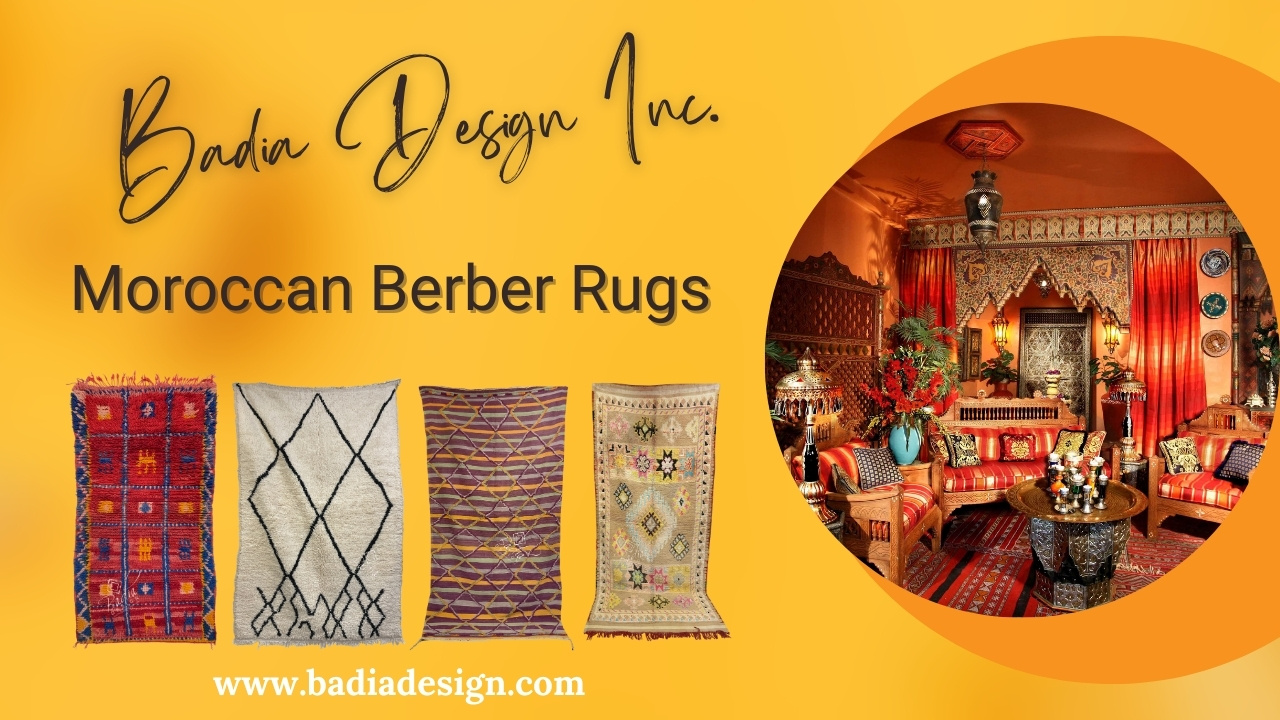Moroccan Berber Carpets
Moroccan Berber Carpets
Blog Article
Moroccan Berber Rugs: A Blend of History, Craftsmanship, and Timeless Style
Moroccan Berber Rugs have captivated homeowners and businesses worldwide with their storied past, exquisite craftsmanship, and unmatched versatility. Whether you are furnishing a cozy living room, a modern office space, or a upscale resort, these rugs serve as more than just functional items—they are pieces of art with a story to tell. In this article, we’ll explore the rich origins of Moroccan Berber rugs, the meticulous craftsmanship behind their creation, their renowned durability, and creative ways to incorporate them into today’s interiors.
The origins of Moroccan Berber rugs can be traced back thousands of years to the Berber tribes of North Africa. These indigenous groups, with their rich cultural heritage, developed rug-weaving techniques as a practical response of their migratory way of life and varied environmental conditions.
Each Berber rug tells a story, often expressed through patterns and designs unique to the tribe or family that created it. These symbols frequently represent themes of safety, growth, or nature, making each rug a deeply personal creation. Originally, these rugs were crafted for utilitarian purposes, such as providing warmth during harsh winters in the Atlas Mountains or acting as soft bedding in arid desert regions.
During the 20th century, these rugs were introduced to global design by architects such as Le Corbusier and Frank Lloyd Wright, who used them in prestigious projects. Now, these rugs are highly sought after for their elegance and historical depth.
The production of Moroccan Berber rugs is an elaborate art form passed on through generations. This craftsmanship embodies a deep connection to heritage and artistry.
These rugs are made from high-quality natural fibers, renowned for their durability and comfort. Wool stands out for being both durable and cozy, as well as for its natural warmth. Artisans often hand-spin the wool, giving each rug a distinctive texture.
Berber rugs are handwoven on classic frames, a process that can take weeks or even months depending on the size and complexity of the design. The knots—whether Beni Ourain’s loose and shaggy texture or the tighter weave of Azilal rugs—shape its beauty and resilience.
Natural dyes derived from plants, minerals, and insects are used to create the vibrant colors found in many Berber rugs. Neutral shades dominate Beni Ourain designs, while brighter Azilal and Boucherouite pieces feature striking colors like red, blue, and yellow.
One of the key features of Moroccan Berber rugs is their exceptional durability. This makes them a smart choice for both homes and commercial spaces.
Berber rugs owe their longevity to the excellent quality of their natural fibers. Wool’s elasticity and stain resistance contribute to their durability.
Cleaning and maintaining a Moroccan Berber rug is relatively simple. Routine vacuuming and periodic professional care can preserve their beauty for decades.
Tips for Styling Moroccan Berber Rugs in Modern Homes
Incorporating Moroccan Berber rugs into contemporary interiors is easier than you might think. Their versatile designs and textures can complement a wide range of styles, from minimalist to bohemian.
1. Create a Focal Point in the Living Room
A large Beni Ourain rug can serve as the focal point of your living area. The rug’s muted tones and clean lines bring cohesion to the space and exude coziness.
2. Add Color to Neutral Spaces
If your space leans toward a monochromatic or minimalist aesthetic, a vibrant Azilal or Boucherouite rug can introduce a pop of color and visual interest. They are ideal for subdued settings, acting as the central highlight.
3. Layer Rugs for Texture
For a cozy, eclectic vibe, layer a smaller Berber rug over a larger natural-fiber rug, such as jute or sisal. This pairing enhances texture and emphasizes the unique patterns of the Berber rug.
4. Enhance Workspace Aesthetics
Businesses can use Moroccan Berber rugs to create an inviting and sophisticated ambiance in office spaces, lounges, or reception areas. The artisanal craftsmanship of these rugs radiates authenticity and refinement.
5. Use as Wall Art
Some Moroccan Berber rugs are so visually stunning that they deserve to be displayed as art. Displaying a Berber rug on a wall highlights its intricate design and cultural significance.
The Value of Moroccan Berber Rugs
For both homeowners and businesses, Moroccan Berber rugs represent a blend of practicality, aesthetics, and cultural significance. These rugs are built to last, and their classic designs remain relevant despite evolving decor trends.
Eco-Friendly and Ethical Craftsmanship
Many Berber Moroccan Tribal Rugs rugs are crafted using eco-friendly and sustainable practices. By investing in these rugs, you’re not only enhancing your space but also supporting traditional artisans and their communities.
The Appreciating Worth of Moroccan Berber Rugs
Authentic Moroccan Berber rugs often appreciate in value over time, especially vintage or rare pieces. These rugs serve as both decorative items and investment-worthy collectibles.
 Report this page
Report this page